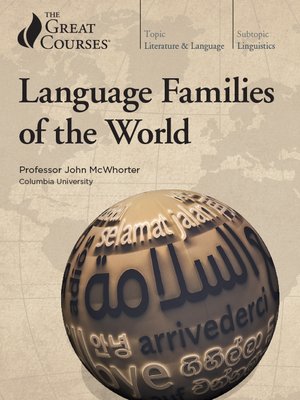
Sign up to save your library
With an OverDrive account, you can save your favorite libraries for at-a-glance information about availability. Find out more about OverDrive accounts.
Find this title in Libby, the library reading app by OverDrive.



Search for a digital library with this title
Title found at these libraries:
| Library Name | Distance |
|---|---|
| Loading... |
Language, in its seemingly infinite varieties, tells us who we are and where we come from. Many linguists believe that all of the world's languages—over 7,000 currently—emerged from a single, prehistoric source. While experts have not yet been able to reproduce this proto-language, most of the world's current languages can be traced to various language families that have branched and divided, spreading across the globe with migrating humans and evolving over time.The ability to communicate with the spoken word is so prevelant that we have yet to discover a civilization that does not speak. The fitful preservation of human remains throughout history has made tracing the ultimate origin of sophisticated human cultures difficult, but it is assumed that language is at least 300,000 years old. With so much time comes immense change—including the development of the written word. There's no doubt that over centuries, numerous languages have been born, thrived, and died. So how did we get here and how do we trace the many language branches back to the root?In Language Families of the World, Professor John McWhorter of Columbia University takes you back through time and around the world, following the linguistic trails left by generations of humans that lead back to the beginnings of language. Utilizing historical theories and cutting-edge research, these 34 astonishing lectures will introduce you to the major language families of the world and their many offspring, including a variety of languages that are no longer spoken but provide vital links between past and present.







